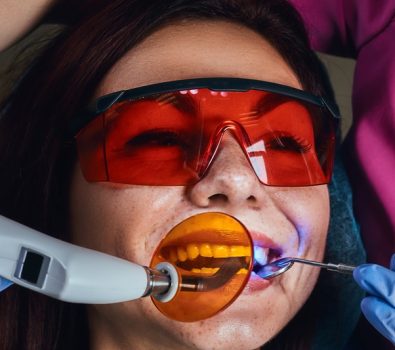For many years, braces were only offered in one design; however, there are many to pick from today. There are numerous alternatives when beginning orthodontic treatment for yourself or your child. Each alternative has advantages and downsides. With the assistance of an orthodontist, you can select which braces are best for your specific case. Here we will look at the numerous orthodontic products and make some comparisons.
Types of Braces
Traditional metal braces, ceramic braces, lingual braces, and even invisible Invisalign are some of the options dentists have when correcting misaligned teeth. There are pros and cons to every kind that must be considered when figuring out which is perfect for a patient. See what is available for you below and find an excellent provider of Invisalign in the area.
Metal Braces
Around the past century, metal or conventional braces have become the standard for orthodontic treatment around the world. Before, orthodontic appliances were huge and apparent. Luckily, current braces have come a long way since they were initially presented.
Regarding orthodontic treatment, metal braces are the most popular selection among young patients and adolescents. They can straighten the teeth by bonding the braces to the teeth and linking them together with a wire. Elastic ties of different colors are used to secure the wire to the braces. Each time you go to the orthodontist, they will make small adjustments to the wire that will progressively change your teeth into place. Let a family dental health clinic help you with this treatment.
Lingual Braces
Lingual braces, placed under the teeth, are a great option for individuals who do not want their orthodontic treatment to be openly evident but still need extensive work. The use of hidden braces has also grown in favor among image-conscious teens.
Nevertheless, some individuals may experience speech abnormalities (lisping is common) and tongue sensitivity since lingual braces are set behind the teeth. These issues turn up soon after getting braces placed on; however, as your mouth adjusts to the new devices, they disappear.
Ceramic Braces
Ceramic braces are less noticeable than metal ones, given that they blend in with your teeth. Their performance coincides with standard metal braces, although they are less recognizable in day-to-day life. Individuals who do not qualify for Invisalign or lingual braces yet still wish for a discrete and cost-effective approach to straighten their teeth commonly select ceramic braces. These customers are usually fashion-conscious young people and teenagers. Ceramic braces could be a more practical and cosmetically pleasing substitute for metal braces.
Self-Ligating Brace
Braces that do not require an elastic band to hold them in place are called self-ligating braces, and they are available in metal, clear, or ceramic. They also use a wire and brackets to change the teeth into spots. Metal and ceramic braces use flexible rubber ties to maintain the wire in position, while self-ligating braces use doors or clips.
Invisalign and Clear Aligners
Individuals with light to moderate dental abnormalities, such as misaligned teeth, huge overbites, no jaw positioning troubles, and gaps in the front teeth, can gain from Invisalign. This includes individuals who had braces as a kid and now need a “touch-up.” Nevertheless, braces still triumph over clear aligner systems like Invisalign when it involves repairing complex issues or supplying extensive treatment. Visit some websites like https://azuredentalsf.com/cost-of-invisalign/ to learn more.




